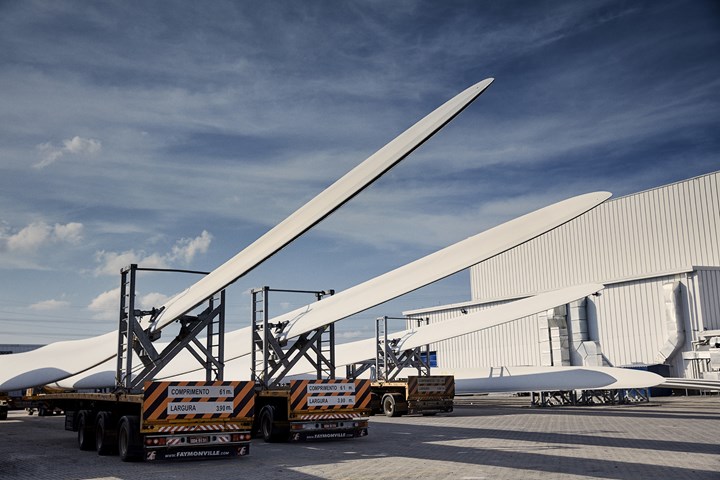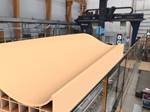GE to research AM for wind turbine blades
Twenty-five-month project to couple low-cost thermoplastic skin with AM for high-performance wind blade designs to be used on large rotors.

LM Wind Power blades. Photo Credit: LM Wind Power
It was announced on Feb. 5 that , (Paris France) and (Kolding, Denmark), a GE Renewable Energy business, were recently selected by the U.S. Department of Energy (DOE) to research the design and manufacture of 3D-printed wind turbine blades. The GE business units will partner with the Oak Ridge National Laboratory (ORNL, Knoxville, Tenn., U.S.) and the DOE’s National Renewable Energy Lab (NREL) on a 25-month, $6.7 million project to develop and demonstrate an integrated additive manufacturing (AM) process for novel high-performance wind blade designs for large rotors. The award was announced by DOE on Jan. 13, 2021.
“We are excited to partner with the DOE Advanced Manufacturing Office, as well as with our world’s class partners to introduce a highly innovative advanced manufacturing and additive process to completely revolutionize the state- of-the-art of wind blade manufacturing,” says Matteo Bellucci, GE Renewable Energy Advanced Manufacturing leader. “Additive manufacturing can bring a step change in cost and performance competitiveness in the wind industry and help GE Renewable Energy support our customers in driving the energy transition farther and faster.”
The project will deliver a full-size blade tip ready to be structurally tested, as well as three blade tips that will be installed on a wind turbine. The proposed project will focus on a low-cost thermoplastic skin coupled with printed reinforcement.
According to GE, the project will also advance the competitiveness of both onshore and offshore wind energy when commercialized, by lowering manufacturing cost, increasing supply chain flexibility and providing lighter weight blades made with more recyclable materials. The goal is to reduce design cycle time as well, potentially enabling more wind farm optimization, which will yield further increases in farm annual energy production and reduce levelized cost of energy.
“Through GE’s Research Lab, we have an entire business portfolio for wind,” adds Todd Anderson, Principal Investigator at GE Research. “Over the years, GE scientists have been successful at applying our legacy of materials and composites expertise in aviation to the wind energy space. We were the first to introduce lightweight composite fan blades in our jet engines more than two decades ago. Today, with our business partners and leading national laboratories, we’re bringing that experience and more to deliver a more advanced wind blade to take wind power to the next level of cost and performance.”
Related Content
-
NCC receives investment to support next-gen composite wing
The NCC was awarded a £15.8 million U.K. government grant for HRMCap to de-risk, accelerate innovation in high-rate large aerocomposites structure manufacturing.
-
TPI manufactures all-composite Kenworth SuperTruck 2 cab
Class 8 diesel truck, now with a 20% lighter cab, achieves 136% freight efficiency improvement.
-
Sinonus launches energy-storing carbon fiber
Swedish deep-tech startup Sinonus is launching an energy-storing composite material to produce efficient structural batteries, IoT devices, drones, computers, larger vehicles and airplanes.






